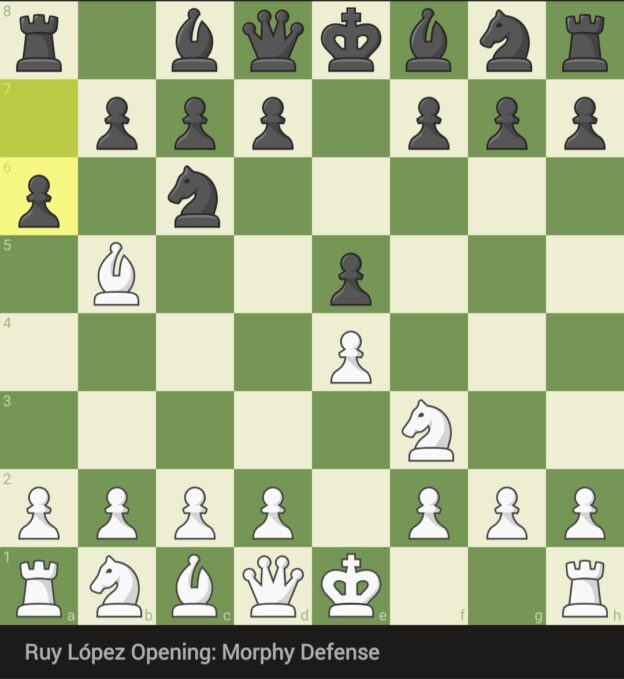In the realm of chess openings, the Ruy López, known for its classical and strategic nature, has long been a favorite among chess players. However, in the vast world of chess, there’s room for innovation and surprise. The Morphy Defense, named after the legendary Paul Morphy, offers a dynamic and unconventional approach to the Ruy López. This essay explores the history, principles, and distinctive features of the Morphy Defense.
Historical Origins:
The Ruy López, named after the Spanish priest Ruy López de Segura in the 16th century, is one of the oldest and most respected openings in chess. It typically arises after the moves 1.e4 e5 2.Nf3 Nc6 3.Bb5. However, the Morphy Defense deviates from this well-trodden path. Paul Morphy, the American chess prodigy of the 19th century, introduced this novel defense during his games. His creative and audacious approach to chess left an indelible mark, and the Morphy Defense stands as a testament to his innovative spirit.
The Morphy Defense in a Nutshell:
The Morphy Defense occurs after the opening moves 1.e4 e5 2.Nf3 Nc6 3.Bb5 a6 4.Ba4 Nf6 5.O-O Be7 6.d3 b5 7.Bb3 d6 8.c3 O-O 9.h3. At this point, Black usually plays 9…Na5, targeting the bishop on b3. The idea is to provoke White into committing the bishop to c2, where it can be attacked further with 10…c5, leading to a fluid and dynamic pawn structure.
Principles and Characteristics:
- Imbalance and Initiative: The Morphy Defense seeks to create an imbalanced position early in the game. Black willingly sacrifices pawn structure for piece activity and the initiative. By forcing the bishop to commit to c2, Black opens the center and prepares to launch an aggressive attack on the queenside.
- Flexible Pawn Structure: The Morphy Defense leads to a flexible pawn structure with pawn chains on both sides of the board. This dynamic structure provides ample opportunities for tactical skirmishes and piece mobility.
- Counterattacking Opportunities: Black’s setup in the Morphy Defense offers counterattacking chances. With the bishop on d7 and pawns on d6 and c5, Black can initiate threats on the queenside while keeping a vigilant eye on the center.
Modern Relevance:
In contemporary chess, the Morphy Defense is less common at the highest levels of play, where players often opt for more traditional and established lines. However, it remains a viable choice for players seeking to surprise their opponents and engage in complex, tactical battles. The Morphy Defense can be a valuable asset in one’s repertoire, especially at club and amateur levels where opponents may not be as well-prepared for its intricacies.
Conclusion:
The Morphy Defense of the Ruy López is a fascinating departure from convention, embodying the spirit of creativity and innovation in chess. While it may not be the primary weapon of choice for elite players, its dynamic nature and potential for tactical fireworks make it an exciting and unpredictable option. For those who appreciate the rich tapestry of chess openings, the Morphy Defense serves as a reminder that the beauty of the game lies not just in the well-trodden paths but also in the unexplored byways of chess creativity.
